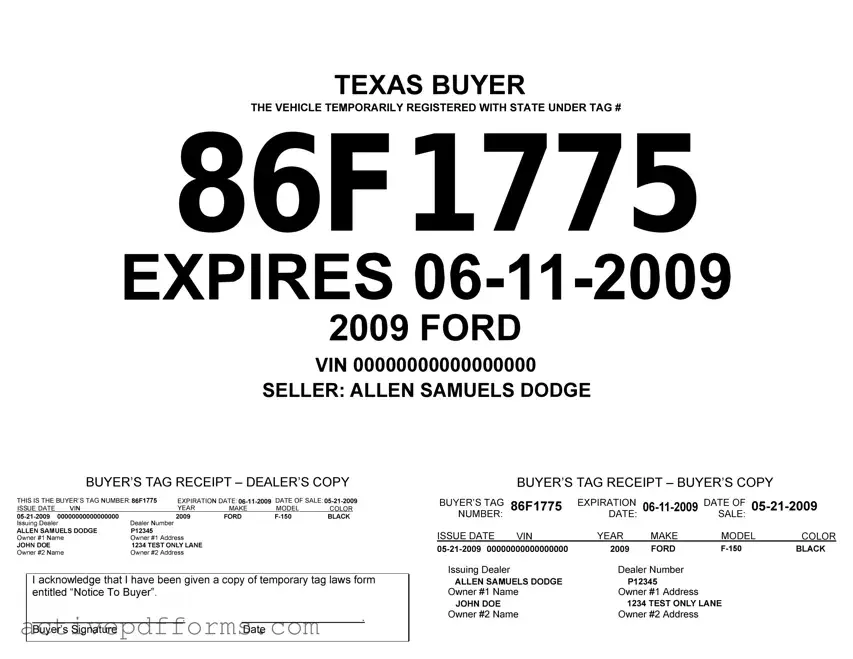In Texas, motorists often require a temporary means to legally drive their vehicles on public roads while waiting for permanent registration documents. This need is met by the Texas Temporary Tag form, a crucial document designed to bridge this gap effectively. Primarily, these temporary tags are issued for various reasons including but not limited to, vehicles newly purchased from dealers or private sellers, and in situations where the permanent plates are delayed. The form not only facilitates legal driving but also aids law enforcement in identifying valid, temporary vehicle registrations. Obtaining this tag involves a straightforward process, yet it requires accurate completion and submission of the form to the Texas Department of Motor Vehicles (DMV). It's essential for users to be aware of the specific criteria, deadlines, and the limited validity period of these tags to ensure compliance with state regulations. Additionally, understanding the fees associated with the issuance of temporary tags, and how to properly display them on the vehicle, are crucial aspects that ensure motorists adhere to Texas state laws while keeping public roads safe for everyone.

